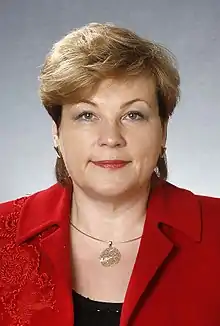2007 Estonian parliamentary election
Parliamentary elections were held in Estonia on 4 March 2007. The newly elected 101 members of the 11th Riigikogu assembled at Toompea Castle in Tallinn within ten days of the election. It was the world's first nationwide vote where part of the voting was carried out in the form of remote electronic voting via the internet.
| |||||||||||||||||||||||||||||||||||||||||||||||||||||||||||||||||||||||||||||
All 101 seats in the Riigikogu 51 seats needed for a majority | |||||||||||||||||||||||||||||||||||||||||||||||||||||||||||||||||||||||||||||
|---|---|---|---|---|---|---|---|---|---|---|---|---|---|---|---|---|---|---|---|---|---|---|---|---|---|---|---|---|---|---|---|---|---|---|---|---|---|---|---|---|---|---|---|---|---|---|---|---|---|---|---|---|---|---|---|---|---|---|---|---|---|---|---|---|---|---|---|---|---|---|---|---|---|---|---|---|---|
| |||||||||||||||||||||||||||||||||||||||||||||||||||||||||||||||||||||||||||||
 Results by electoral district | |||||||||||||||||||||||||||||||||||||||||||||||||||||||||||||||||||||||||||||
| |||||||||||||||||||||||||||||||||||||||||||||||||||||||||||||||||||||||||||||
The election saw the Estonian Reform Party emerge as the largest faction in the Riigikogu with 31 seats. The Estonian Centre Party finished second with 29 seats, whilst the new Union of Pro Patria and Res Publica lost 16 seats compared to the 35 won by the two parties in the 2003 elections. The Social Democrats gained 4 seats, whilst the Greens entered the Riigikogu for the first time with 6 seats and the People's Union lost seven of its 13 seats. This election would be the last time that the Greens and the People's Union[lower-alpha 2] would enter into parliament. The Riigikogu elected after this election became the only one in contemporary Estonian history to have a single government[lower-alpha 3] last throughout an entire parliamentary term.
After the election, the Centre Party, led by the mayor of Tallinn Edgar Savisaar, had been increasingly excluded from collaboration due to his open collaboration with Putin's United Russia party, real estate scandals in Tallinn,[1] and the Bronze Soldier controversy, considered a deliberate attempt to split Estonian society by provoking the Russian minority.[2]
Background
After the 2003 election, the Centre and Res Publica parties nearly tied for first place, with both saying that they should get the chance to try and form the next government,[3] while ruling out any deal between themselves.[4] President Rüütel had to decide who he should nominate as Prime Minister and therefore be given the first chance at forming a government.[4] On the 2 April he invited the leader of the Res Publica party, Juhan Parts to form a government[5] and after negotiations a coalition government composed of Res Publica, the Reform Party and the People's Union was formed on the 10 April.[5] The government has also been referred to as the Harmony coalition.[6][7][8][9]
On 20 August 2004, Lihula municipality head Tiit Madisson erected the Lihula monument on the territory of the municipality, which represented a soldier in SS uniform.[10] The national government had ordered the removal of the monument and by the evening of 2 September, the rescue services and the police had arrived to take down the monument. The takedown was secured by police with dogs and rubber batons but the locals started pelting the rescue services and police with stones. The police then threatened them with tear gas.[11]
At the beginning of March, the Reform Party and the People's Union decided to present a motion of no confidence against the Minister of Justice Ken-Marti Vaher of Res Publica as part of the proposal by Res Publica to start using metrics to catch corrupt people.[12] The Riigikogu voted no-confidence in Vaher with 54 votes in favor.[13] After the vote, Prime Minister Juhan Parts said he would resign.[14] On 24 March 2005, Juhan Parts submitted his resignation request to President Arnold Rüütel, and the government resigned.[15]
Reform and the People's Union then entered negotiations with the Centre Party to form a new government. The new government took office on 13 April 2005 and left office after a new coalition was formed following the 2007 election. The government has also been called the garlic coalition due to the agreement being reached in the corresponding restaurant in Tallinn's Old Town.[16]
On 15 November 2006 Res Publica and the Pro Patria Union officially merged into the Pro Patria and Res Publica Union (Erakond Isamaa ja Res Publica Liit - IRL).[17][18][19]
Electoral system
In 2007 Estonia held its and the world's first national Internet election. Voting was available from February 26 to 28.[20] A total of 30,275 citizens (3.4%) used Internet voting.[21]
Electronic voting in Estonia began in October 2005 local elections when Estonia became the first country to have legally binding general elections using the Internet as a means of casting the vote and was declared a success by the Estonian election officials.
The electoral system was a two-tier semi-open list proportional representation system with a 5% (27,510.65 votes for this election) election threshold.
Seats by electoral district
| District number | Electoral District | Seats |
|---|---|---|
| 1 | Haabersti, Põhja-Tallinn and Kristiine districts in Tallinn | 8 |
| 2 | Kesklinn, Lasnamäe and Pirita districts in Tallinn | 11 |
| 3 | Mustamäe and Nõmme districts in Tallinn | 8 |
| 4 | Harjumaa (without Tallinn) and Raplamaa counties | 13 |
| 5 | Hiiumaa, Läänemaa and Saaremaa counties | 7 |
| 6 | Lääne-Virumaa county | 6 |
| 7 | Ida-Virumaa county | 8 |
| 8 | Järvamaa and Viljandimaa counties | 8 |
| 9 | Jõgevamaa and Tartumaa counties (without Tartu) | 7 |
| 10 | Tartu city | 8 |
| 11 | Võrumaa, Valgamaa and Põlvamaa counties | 9 |
| 12 | Pärnumaa county | 8 |
Contesting parties
The Estonian National Electoral Committee announced that 11 political parties and seven individual candidates registered to take part in the 2007 parliamentary election. Their registration numbers and order were determined by a draw lot, as opposed to the order of registration as was done previously.[22]
Results
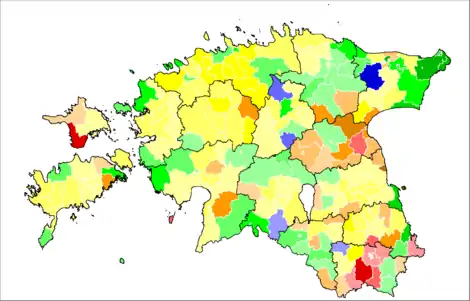
| ERE | EKE | IRL | SDE | ERL |
|---|---|---|---|---|
|
20–29%
30–39%
40–49%
50–59% |
20–29%
30–39%
40–49%
50–59%
60–69%
70–79% |
20–29%
30–39%
40–49%
50–59% |
20–29%
30–39%
40–49%
50–59% |
20–29%
30–39%
40–49%
50–59%
60–69%
80–89% |
 | |||||
|---|---|---|---|---|---|
| Party | Votes | % | Seats | +/– | |
| Estonian Reform Party | 153,044 | 27.82 | 31 | +12 | |
| Estonian Centre Party | 143,518 | 26.08 | 29 | +1 | |
| Pro Patria and Res Publica Union | 98,347 | 17.87 | 19 | –16 | |
| Social Democratic Party | 58,363 | 10.61 | 10 | +4 | |
| Estonian Greens | 39,279 | 7.14 | 6 | New | |
| People's Union of Estonia | 39,215 | 7.13 | 6 | –7 | |
| Party of Estonian Christian Democrats | 9,456 | 1.72 | 0 | 0 | |
| Constitution Party | 5,464 | 0.99 | 0 | 0 | |
| Estonian Independence Party | 1,273 | 0.23 | 0 | 0 | |
| Russian Party in Estonia | 1,084 | 0.20 | 0 | 0 | |
| Estonian Left Party | 607 | 0.11 | 0 | 0 | |
| Independents | 563 | 0.10 | 0 | 0 | |
| Total | 550,213 | 100.00 | 101 | 0 | |
| Valid votes | 550,213 | 99.05 | |||
| Invalid/blank votes | 5,250 | 0.95 | |||
| Total votes | 555,463 | 100.00 | |||
| Registered voters/turnout | 897,243 | 61.91 | |||
| Source: Nohlen & Stöver,[27] IPU | |||||
Aftermath
Following the election a three party coalition government, also called the Triple Alliance, was formed between Reform, the Pro Patria and Res Publica Union and SDE. This lasted until May 2009, when SDE left the government following budget cuts as a result of the global economic crisis, the two remaining parties were able to carry on in government as a minority coalition however, holding 50 out of 101 seats in the Parliament.
Notes
- Combined results of the pre-merger Pro Patria Union and Res Publica Party.
- In its current form, before being reconstructed into EKRE.
- De jure - the Social Democrats left the government midway throughout the term, which some consider the start of a new government despite a new mandate not being requested from the Riigikogu. See Andrus Ansip's second cabinet.
- Combined results of the pre-merger Pro Patria Union and Res Publica Party.
References
- Savisaar's and Kruuda's mutual gifts
- Lõhestaja number üks Archived 2007-10-06 at the Wayback Machine Postimees
- "Estonia: Two Parties Want To Form Government After Close Election". Radio Free Europe/Radio Liberty. 2003-03-03. Archived from the original on 2009-02-17. Retrieved 2009-06-01.
- "Estonia quandary after split vote". BBC News Online. 2003-03-03. Retrieved 2009-06-01.
- "Estonia: parliamentary elections Riigikogu, 2003". Inter-Parliamentary Union. Retrieved 2009-06-01.
- "Koosmeele koalitsioon 2003 | Reformierakond" (in Estonian). 2022-03-30. Retrieved 2023-08-22.
- "Koosmeele koalitsioon". Arvamus (in Estonian). 2003-03-09. Retrieved 2023-08-22.
- "Res Publica pooldas koosmeele koalitsiooni". www.ohtuleht.ee (in Estonian). Retrieved 2023-08-22.
- "Res Publica pooldab koosmeele koalitsiooni". Delfi (in Estonian). Retrieved 2023-08-22.
- ERR (2021-06-21). "Suri Tiit Madisson". ERR (in Estonian). Retrieved 2023-08-22.
- "Lihula monument võeti ööpimeduses maha". www.ohtuleht.ee (in Estonian). Retrieved 2023-08-22.
- "Korruptantide jahtimise plaan lõi Vaheri ametikoha kõikuma". Eesti Päevaleht (in Estonian). Retrieved 2023-08-22.
- "Arhiiv | ERR". Arhiiv | ERR. Retrieved 2023-08-22.
- "Juhan Parts astub peaministri kohalt tagasi". Arhiiv (in Estonian). 2005-03-21. Retrieved 2023-08-22.
- "Peaminister Juhan Partsi valitsus astus tagasi". Arhiiv (in Estonian). 2005-03-24. Retrieved 2023-08-22.
- "Küüslaugukoalitsioon sünnib suure valuga". Eesti Päevaleht (in Estonian). Retrieved 2023-08-22.
- "Isamaaliidu ja Res Publica üldkogud kiitsid liitumise ülekaalukalt heaks". Eesti (in Estonian). 2006-06-04. Retrieved 2023-08-22.
- "Isamaa ja Res Publica Liit: Õnn ei ole rahas". Eesti (in Estonian). 2006-11-14. Retrieved 2023-08-22.
- "e-Äriregister – ISAMAA Erakond". ariregister.rik.ee. Retrieved 2023-08-22.
- Estonia to hold first national Internet election, News.com, February 21, 2007
- Estonia Scores World Web First In National Polls Archived 2020-05-28 at the Wayback Machine, InformationWeek February 28, 2007
- Heinsalu, Alo; Koitmäe, Arne; Mandre, Leino; Pilving, Mihkel; Vinkel, Priit; Eero, Gerli; Eesti Rahvusraamatukogu; Eesti, eds. (2011). Valimised Eestis: statistikat ja selgitusi. Tallinn: Vabariigi Valimiskomisjon.
- Eesti Päevaleht 20 June 2008: Kaitsepolitsei aastaraamat: Vene luure tegi mullu Eestis usinalt tööd Archived 2008-06-30 at the Wayback Machine by Kärt Anvelt
- "Counterintelligence". Annual Review 2007 (PDF). Tallinn: Estonian Security Police. 2008. p. 8. Archived from the original (PDF) on 2010-04-15.
- KAPO aastaraamat 2007
- "Kaitsepolitsei aastaraamat: Vene luure tegi mullu Eestis usinalt tööd". Eesti Päevaleht (in Estonian). Retrieved 2023-08-22.
- Dieter Nohlen & Philip Stöver (2010) Elections in Europe: A data handbook, pp585–588 ISBN 978-3-8329-5609-7
External links
- Opinion Polls
- Estonia European Election Database

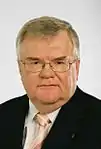
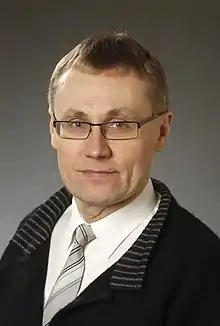
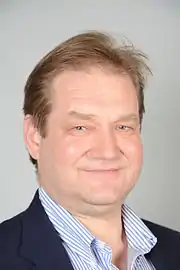
.jpg.webp)
